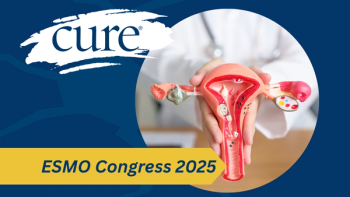
- Winter 2007
- Volume 6
- Issue 6
When Survivors Speak And Physicians Listen
Ovarian cancer survivor advocates led the way for scientific studies of early symptoms of ovarian cancer and are ultimately responsible for the recognition and consensus statement on the warning signs by the medical community.
Ovarian cancer was called the “silent killer” because it was thought to have no symptoms until it was too late to make a difference. But the ovarian cancer survivor community recognized the existence of symptoms often ignored by the medical community. Only 20 percent of the 22,000 annual cases of ovarian cancer in the United States are diagnosed at an early stage, a point when the chance of cure is 70 to 90 percent. However, the vast majority of cases are diagnosed in advanced stages, when the cure rate falls to 10 to 20 percent..
My interest in early detection of ovarian cancer began in 1998. While speaking at a conference for cancer survivors, I listened in on an ovarian cancer lecture. A woman in the audience asked the speaker to elaborate on the early symptoms of ovarian cancer. He explained that there really were none. The audience became very angry, and I remember sitting in the back of the room thinking I was glad I didn’t get assigned that topic to speak on because I would have given the same answer. We, as medical professionals, had been taught that ovarian cancer has no symptoms until it reaches the advanced stages.
After the lecture, I talked with several of the women and was impressed by the clarity with which they recalled symptoms they had leading up to their diagnoses. My research interests were in identifying mechanisms for chemotherapy resistance in ovarian cancer, but I was urged by the advocates to conduct a study that would be taken seriously by the medical community.
So in 2000, I teamed up with Cindy Melancon, a founding member of the Ovarian Cancer National Alliance who later lost her life to the disease, and others to publish the results of a national ovarian cancer survey that confirmed 97 percent of women with ovarian cancer experience symptoms prior to diagnosis. We also found that women with early-stage disease—those with the best chance of cure—did, in fact, have symptoms prior to diagnosis. We looked at problems with delayed diagnosis and misdiagnosis, both on the patient side and the physician side. We found that neither women nor physicians understood that specific symptoms could be associated with ovarian cancer.
We did follow-up studies evaluating symptoms in women presenting to primary care clinics and compared them to women with ovarian cancer. While symptoms of ovarian cancer were common in the general population, we found significant differences in the frequency and duration of symptoms in cancer patients versus the general population.
Further studies identified persistent bloating, abdominal pain, urinary symptoms, and feeling full too quickly as being predictive of having ovarian cancer when they occurred more than 12 times per month and had been present for less than a year. Although many other symptoms are common in ovarian cancer patients, they are not as useful in identifying the disease since they are found at equal frequencies in the general population without cancer.
Based on this research, in June 2007, the Gynecologic Cancer Foundation, joined by the Society of Gynecologic Oncologists, the American Cancer Society, and 38 advocacy organizations, released the “Ovarian Cancer Symptoms Consensus Statement” to confront the lack of recognized early warning signs and symptoms for the deadliest gynecologic cancer.
Since there is no screening test for ovarian cancer, this consensus statement hopefully will lead to symptom recognition by both women and their physicians, and may allow for earlier diagnosis when a cure is more likely—90 percent, in fact, for women diagnosed with stage 1 ovarian cancer.
—Barbara A. Goff, MD, is director of the Division of Gynecologic Oncology at the University of Washington, and a member of the Gynecologic Cancer Foundation and Society of Gynecologic Oncologists. The “Ovarian Cancer Symptoms Consensus Statement” can be found at
Articles in this issue
over 15 years ago
Support Sitesover 15 years ago
Resourcesover 15 years ago
Caught in Medicare Limboover 15 years ago
My Healing Journalalmost 16 years ago
Where to Find Helpalmost 18 years ago
Breaking News from ASH and SABCSalmost 18 years ago
Message from the Editoralmost 18 years ago
Warning Signsalmost 18 years ago
A Dose Of Informationalmost 18 years ago
Art & Life




